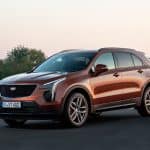The journey of recovering from an injury is deeply personal and varies widely from person to person. Many individuals, eager to regain their strength, follow their medical professionals’ advice to the letter, often leading to surprising results. This commitment can open new avenues, such as the emerging popularity of e-bikes in outdoor activities.
While traditional bicycles offer a distinct workout, e-bikes can provide a gentler reintroduction to cycling, appealing to a broader audience, including those overcoming physical challenges. The transformative power of e-bikes lies in their ability to make cycling more accessible. Riders can adjust the use of the electric assist feature to suit their fitness levels, combining a good workout with the enjoyment of the great outdoors.
Access to trails can vary depending on local regulations; thus, it’s vital to understand the specific rules concerning e-bike use in your area. Trail etiquette remains crucial for ensuring that all users have an enjoyable experience. Users are often encouraged to communicate clearly when passing others and to maintain a courteous demeanor, essential for sharing paths with cyclists, hikers, and equestrians.
Concerns about e-bikes complicating pre-existing trail dynamics are not new. Similar issues have arisen throughout the history of multi-use trails. However, with shared understanding and respectful interaction, e-bikes can coexist harmoniously with traditional outdoor activities, promoting an inclusive environment for all outdoor enthusiasts.
The rise in popularity of e-bikes has not only transformed personal recovery journeys but has also significantly impacted the cycling industry at large. As technology advances and the health benefits of cycling become more widely recognized, e-bikes have carved out a substantial market niche.
Industry Overview
The e-bike industry has seen exponential growth over the past few years, fueled by a combination of health awareness, environmental concerns, and the desire for sustainable transportation. According to recent market analyses, the global e-bike market is projected to reach USD 47 billion by 2026, growing at a compound annual growth rate (CAGR) of around 8% from 2021 to 2026. The increasing adoption of e-bikes by commuters and recreational riders alike highlights a shift in consumer preferences toward more eco-friendly options.
Market Forecasts
As urbanization continues, cities are becoming more congested, and public transportation is often overstressed. E-bikes serve as a practical solution for short to medium distances, providing a quick, efficient, and enjoyable means of transportation. Moreover, advancements in battery technology and charging infrastructure are anticipated to further boost the e-bike market, making them more accessible and convenient for everyday users. The growth of the e-bike segment is particularly prominent in regions like Europe and North America, where cycling culture is gaining traction, and government incentives are being introduced to encourage the use of electric bicycles.
Issues Related to the Industry
Despite the positive trends, the e-bike industry faces its challenges. One major issue is the conflict over trail access. As e-bikes become more popular, traditional cyclists and outdoor enthusiasts express concerns that e-bikes could disrupt the dynamics of multi-use trails. Different types of e-bikes—such as those categorized as pedal-assist and throttle-controlled—can create varying experiences for users and may require distinct regulations. Striking a balance between access and environmental stewardship is essential for maintaining a harmonious relationship among all trail users.
Another issue is the need for education on safe riding practices and trail etiquette. With more people using e-bikes, proper instruction on their operation, including understanding speed limits and safe passing techniques, is crucial to prevent accidents and ensure a positive experience for everyone using shared spaces.
In conclusion, while the journey of recovering from an injury through e-biking is intimate and varied, the broader industry and market dynamics present both opportunities and challenges. E-bikes are promoting inclusivity in outdoor activities, and continuous dialogue among users will be vital for fostering shared spaces that benefit all.
For more information on cycling and outdoor activities, you can explore IMBA or USA Cycling.







